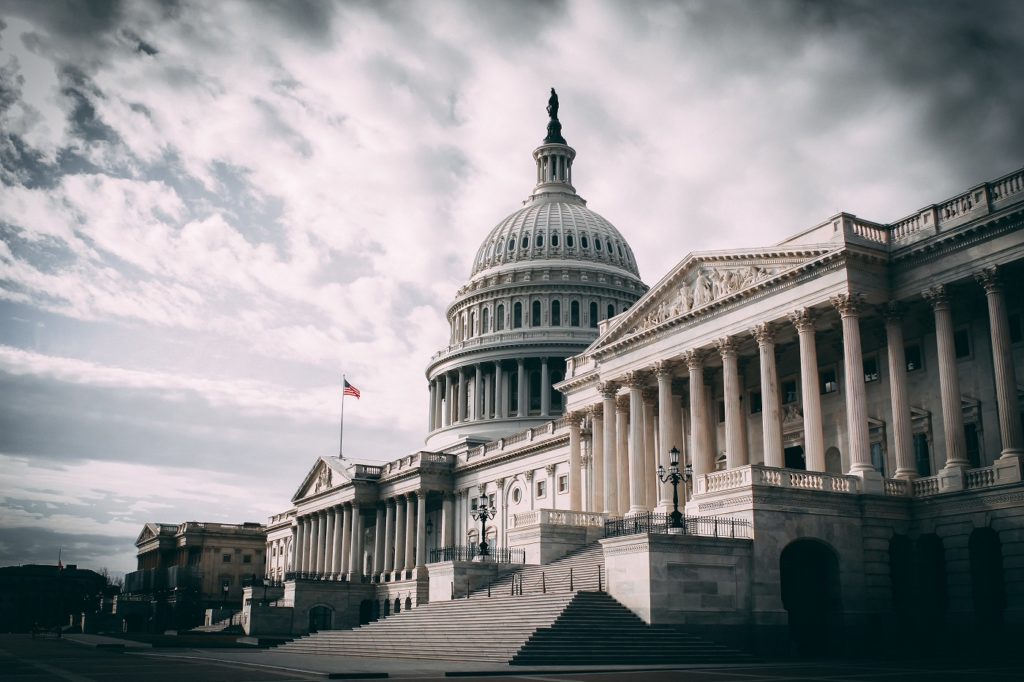In my Public Discourse essay yesterday, I commended Senator Josh Hawley’s forceful condemnation of Roe v. Wade but explained why I don’t think that his proposed test for Supreme Court nominees would work. In this essay, I’d like to offer a broader perspective on the challenge of selecting and confirming Supreme Court justices who will overturn Roe.
Any effort to seat justices who will overturn Roe needs to take account of the serious political obstacles that stand in the way. We must not surrender in the face of these obstacles. But we must recognize them in order to navigate through them or, if possible, knock them down.
I offer here some general lessons drawn from my extensive involvement in every Supreme Court confirmation since 1993, including as a senior staffer on the Senate Judiciary Committee for the nominations of Ruth Bader Ginsburg and Stephen Breyer. I also draw on my experience as a law clerk to Justice Antonin Scalia during the term (1991–1992) that the Court re-affirmed Roe by a 5–4 vote in Planned Parenthood v. Casey. I present these lessons as tendencies and inclinations, not as iron laws.
The White House’s Focus on Short-Term Political Victories
One lesson is that the White House is very focused on ensuring that a Supreme Court nomination provide a short-term political victory. A presidential term lasts four years, while a Supreme Court justice’s tenure is for life. The mismatch gives the president and his advisers an incentive to care much more about how a nomination affects the president’s immediate political standing—and, if he is in his first term, his prospects for re-election—than about how it reshapes the Court over the long term. That is especially true when the president and his closest advisers are not lawyers. So among the candidates that the White House counsel presents, the president will be inclined to select the candidate who seems most politically adept and least controversial.
Start your day with Public Discourse
Sign up and get our daily essays sent straight to your inbox.A presidential term lasts four years, while a Supreme Court justice’s tenure is for life. The mismatch gives the president and his advisers an incentive to care much more about how a nomination affects the president’s immediate political standing... than about how it reshapes the Court over the long term.
A president also has lots of different constituencies to try to satisfy with his Supreme Court nomination. For a Republican president, pro-lifers have been an important constituency. But they compete for attention with other groups, from business owners to gun enthusiasts to ranchers. A president will be inclined to pick a Supreme Court nominee who seems acceptable to all of these constituencies, not to favor one group at the expense of others.
As with any political campaign, the White House wants a smooth roll-out. For this purpose, it’s especially helpful to have a nominee who has unimpeachable credentials and who has won admirers across the ideological aisle. The White House doesn’t want Day One stories that emphasize controversial aspects of the nominee’s record.
Same-party senators by and large reinforce the White House’s short-term political focus. Even though their term is six years, most senators always see re-election on the horizon. They would prefer not to have to expend political capital in support of a nominee. The media bias in favor of liberal nominees by a Democratic president and against conservative nominees by a Republican president makes this preference even stronger for Republican senators. So Republican senators are generally happy to have nominees who have outstanding credentials and have avoided taking positions on hotly contested issues.
Once a nominee has been picked, the political imperative of the White House and same-party senators is to confirm that nominee. It’s not helpful to elicit new information that would bolster the other party’s opposition to the nominee, even if that information would please favored constituencies. As for any new information that emerges that might cast doubt on the wisdom of the nomination, there will be a strong incentive to minimize or discount that information. The nomination train has already left the station, and absent something extraordinary it’s too late to send it back. If the nomination is derailed or defeated, there is ample reason to believe that the White House will be in a weaker position vis-à-vis the opposing party when it makes a new nomination. (The defeat of Robert Bork’s nomination in 1987, and President Reagan’s subsequent nomination of Anthony Kennedy, illustrate the point. The Harriet Miers nomination in 2005 provides a counterexample, but President George W. Bush knew from the outset that the nomination was in jeopardy and withdrew her nomination quickly, just some three weeks later.)
The White House’s incentives in making a nomination are also shaped by the composition of the Senate and the rules under which the Senate operates. For each of the past eight successful Supreme Court nominations going back to 1993, the Senate has been in the control of the same party as the president. But the threat of a Democratic filibuster on the two vacancies that arose in 2005 and on the Scalia vacancy that was kept open into 2017 gave President George W. Bush and President Trump a strong incentive to find nominees who could win the 60 votes needed to defeat a filibuster.
Going forward, the abolition of the Supreme Court filibuster in the midst of the fight over Justice Gorsuch’s confirmation makes it much easier for a Republican-controlled Senate to confirm a Republican president’s nominee. But a narrow margin in the Senate will still give outsized influence to the senators at the left end of the Republican party. (In theory, any Republican senator whose vote is needed would have leverage. But if the White House can’t accommodate a moderate or liberal Republican senator without losing a conservative senator, and vice versa, it will be tempted to move to the middle in the hope of picking up moderate Democratic support.)
In combination, these political realities have made it, and continue to make it, unattractive for a Republican president to nominate to the Supreme Court someone whose record clearly indicates that he or she will vote to overrule Roe v. Wade.
The Character of Judicial Candidates
When it comes to the candidates themselves, factors of character and personality compound the difficulty. If I may be permitted to indulge in some amateur psychology, I would divide prospective justices into two categories. Type 1 consists of candidates who like to be liked, or who desire to be admired, or who are eager or willing to go along to get along. Type 2 candidates are inner-directed and anchored, don’t care about being popular, and perhaps even enjoy being contrary or cantankerous.
Antonin Scalia was clearly a Type 2 conservative, and so are Clarence Thomas and Samuel Alito. As one recent Supreme Court clerk wrote me: “Thomas and Alito grew up as far away as possible (psychologically) from the corridors of power, and they seem to all the world to find their sense of self in family and in their faith rather than in the applause of the elite. They don’t need to feel important.” Where the other Republican appointees fall—on what might better be considered a spectrum from Strong Type 1 on one side to Strong Type 2 on the other—is less clear.
For the reasons I have explained, the process of selecting and confirming Supreme Court justices strongly favors Type 1 conservatives. A Type 1 conservative is going to be much more adept than a Type 2 conservative at charming senators, trotting out a list of liberal friends and admirers, and neutralizing a leftist media—and thus at winning the support of the president and his advisers for the nomination in the first place.
If and when Roe is next teed up for possible overruling, the pressure from the commanding heights of the elite culture to retain it will be intense. Unfortunately, the qualities of Type 1 conservatives make them less likely to have the fortitude to vote to overrule Roe—and especially to provide the fifth vote to do so.
A Type 1 conservative is going to be much more adept than a Type 2 conservative at charming senators, trotting out a list of liberal friends and admirers, and neutralizing a leftist media.... Unfortunately, the qualities of Type 1 conservatives make them less likely to have the fortitude to vote to overrule Roe—and especially to provide the fifth vote to do so.
What these considerations suggest is that beyond ensuring that Supreme Court candidates have a sound judicial philosophy, those of us who aim to see Roe overturned should value character and courage above stellar credentials. And with the leadership of pro-life senators like Josh Hawley, we should continue to work to build a culture that welcomes the overturning of Roe and the restoration of abortion policy to the democratic processes in the states.
How Pro-Life Senators Could Exert Influence
So what would I recommend that Senator Hawley do in order to exert influence on a Republican president’s Supreme Court nomination? For starters, he shouldn’t act solo. Doing so is easily perceived, or misperceived, as mere political grandstanding. By contrast, there is political strength in numbers. In the current Senate, with a majority of 53 Republicans, Hawley ought to work to locate at least three other pro-life Republican senators with whom to ally. Together they could credibly threaten to deprive an unacceptable nominee of the Republican votes that would be sufficient for confirmation.
So what would I recommend that Senator Hawley do in order to exert influence on a Republican president’s Supreme Court nomination? For starters, he shouldn’t act solo.
Time is of the essence. As Hawley recognizes, senators’ best opportunity for impact is before the White House settles on a nominee. If a vacancy were suddenly to arise now, the White House would likely aim to announce its nominee within a matter of days. What Hawley and his fellow senators should jointly do as soon as possible—before a vacancy arises—is inform the White House of any particular candidates that they regard as unsuitable on Roe and commit to oppose, publicly and immediately, the nomination of any such person. (Whether they do so by written letter to the president, or by a telephone call with, say, the White House Counsel, and whether they make their communication public or try to keep it private, are matters of tactics.) If a vacancy arises and new candidates emerge, they need to be ready to add names to their list very quickly.
This strategy might not succeed. Assessing the judicial philosophy and the character of judicial candidates isn’t easy, and Hawley and company might inadvertently disapprove of worthy candidates and give a pass to unworthy ones. What’s more, the White House is likely to resent the power play—the more so, the longer and more constraining the senators’ list is—and might well try to thwart or ignore it. If the president ends up accommodating, or seeming to accommodate, Hawley’s pro-life pressure, that nominee might face a more perilous confirmation path as a result. But this strategy is, in my judgment, the most promising way that a small number of pro-life senators could maximize the prospect of adding to the Supreme Court another justice who will vote to overturn Roe.













